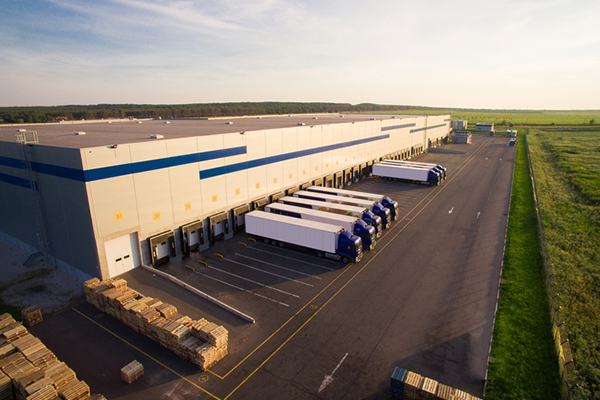An ongoing state of heightened demand for e-commerce distribution space continues to serve as a driver for several of the largest United States Industrial & Logistics (I&L) leases the were completed in the first half of 2018, according to research recently published by Los Angeles-based industrial real estate firm CBRE.
The research, entitled “Dealmakers: Largest Warehouse Leases in H1 2018,” analyzed the 100 largest leases for the I&L space by square footage.
Leading the way were e-commerce players (33 leases) and third-party logistics (3PL) service providers (23 leases), with 56 leases signed for facilities that mainly handle distribution for goods purchased online, according to CBRE. Leases signed by manufacturers were next at 14, followed by food and beverage providers at 11, retailers at four, technology companies at four, with others, or “catch all,” at eight. These 100 facilities account for a cumulative 67.8 million square-feet.
From a size of facility perspective, CBRE found that 30 of these leases were for facilities larger than 750,000 square-feet, which CBRE said represents a preference for “expansive facilities” needed by e-commerce tenants and are equipped with high ceilings and often with modern specifications for automation and the rapid movement of large inventory holdings.
In an interview, Adam Mullen, CBRE America’s Leader of Industrial & Logistics, said that the diversity of the sectors that comprise the top 100 lease list is impressive in its own right, especially with e-commerce companies and 3PLs leading the charge.
“The e-commerce companies that we capture also includes a number of brick and mortar retailers building out their e-commerce networks, which is fantastic,” he said. “It is not just pure play e-commerce players. Retail has always had a spotlight shown on the sector, and everyone always want to know what is happening with retail and malls. So to see that a number of the companies on this list are brick and mortar retailers building out their e-commerce presence to better serve stores is a good thing.”
Seeing e-commerce companies and 3PLs collectively leading the list was not a huge surprise, according to Mullen, calling it more of the same.
“What is interesting, though, is that 3PLs are at the top of the list,” he said. “I would say that is the ‘new’ piece of information here. Many of these 3PLs are also serving e-commerce types of uses. In looking at the raw data, the majority of the 3PLs are serving in a 3PL or retail function.”
What’s more, Mullen said it is possible that the number of leases involving 3PLs could rise in the future.
“3PLs provide the companies they are working with various services in that they are running operations for other folks, and they provide their clients with flexibility, nimbleness, and the runway to be able to operate the back end logistics network without having to make as big of a bet, as you would make having to sign a 10- or 15-year lease. In a world of disruption or the ‘supply chain arms race,’ as we like to say, to be able to relinquish some control to somebody else and have them provide that flexibility and the ability to watch and see, that is a good thing.”
The key U.S. geographies where the most leasing activity cited in CBRE’s research included the top U.S.-based I&L markets, including: California’s Inland Empire with 14 transactions spanning 11.6 million sq. ft.; Atlanta (10 deals for 7 million sq. ft.); Chicago (11 deals for 6.8 million sq. ft.); Pennsylvania’s I-78/I-81 corridor (10 deals for 6.8 million sq. ft.); and and Dallas-Fort Worth (eight deals for 5.2 million sq. ft.).
With the CBRE list focused on square footage, Mullen said it makes sense that the big, massive facilities are likely to be on these type of major markets that are in close proximity to the consumer population.
“If you look across the markets we service in the U.S., everyone is busy,” he said. All the players want to be closer to consumers and reduce transportation costs, with outbound transportation costs typically outweighing inbound transportation costs, means there are more facilities, rather than less. If you add a couple of those factors up, you start seeing facilities pop up, not just in primary markets but also in secondary and tertiary markets, too. We are seeing a lot of out markets popping up and taking down space. It is the norm right now for us across the while landscape.”
Article topics








